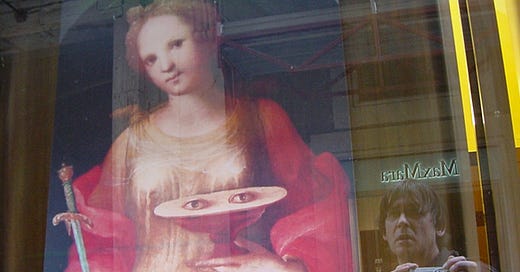unexpected encounters #1 the gaze
What too often gets elided from current gaze talk is the possibility of looking as an act of ambivalence. As Frantz Fanon wrote in “Black Skin, White Masks,” his psychoanalytic study of colonialism, even the oppressor’s gaze can be a site of uncertainty; no one’s viewpoint—or projection—is entirely secure ...
As we can glean from Lacan, sometimes it is useful to feel the gaze turned back at you.
Lauren Michele Jackson, "The Invention of 'The Male Gaze.'" The New Yorker, July 14, 2023
Commentary
When I visited New Zealand in the fall of 2000, it was the first time I had picked up a camera—it was a first generation Sony digital camera with a one-megapixel resolution—in twenty years. I discovered that I enjoyed taking photographs—not just mementoes of people and places, but textures, colors, geometries, plays of light, reflections, juxtapositions, signs. Though I didn't consciously formulate it this way at the time, I was using the camera as a means of arresting the flow of time in images that would reveal what was always there, but is not always apparent to the otherwise preoccupied eye. The Sony accompanied me during the winter semester of 2001, which I spent teaching at the University of Alberta's study abroad program in Tuscany.
I took this photograph one rainy day in Siena. I am fascinated by what the camera sees in shop windows that our brains normally filter out—strange landscapes in which the displays behind the window merge with what is reflected in the glass in a single undifferentiated visual plane. Such images often possess the beauty of Lautréamont's chance encounter between an umbrella and a sewing machine on an operating table that the surrealists so prized. Photography became a compelling hobby. In 2002 I acquired an Olympus digital camera, which I later replaced with a Canon EOS 20D. I switched to a Leica M9 in 2013.
.



